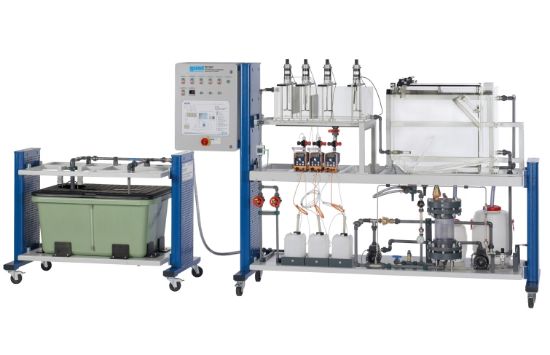CE 587 demonstrates the clarification of raw water containing solids using the dissolved air flotation process.
First, a suspension (raw water) is prepared in a tank. From here the raw water flows into a flocculation tank divided into three chambers. By adding a coagulant in the first chamber the repulsive forces between the solid particles are cancelled out. The solid particles combine into flocs. To create larger flocs a flocculant is added in the second chamber. The coagulant causes a drop of the pH value. By adding caustic soda the pH value of the water can be increased again. In the following third chamber of the flocculation tank low flow velocities are present to prevent any turbulence. Turbulence would impede the formation of flocs.
From the flocculation tank the raw water enters the flotation tank. A part of the treated water is removed from the flotation tank and saturated with air under pressure. This water (recycle water) enters via a relief valve so that it suddenly expands to atmospheric pressure. This creates minute air bubbles which attach to the flocs. This makes the flocs rise to the surface of the water. Using a scraper the floating flocs (float) can be moved into a collection channel.
Flow rates, pressures and pH values are masured. The pH value can additionally be controlled. The pressure of the recycle water can be adjusted.
Trivalent metallic salts are usually well suited as coagulants. Common flocculants are organic polymers. Powdered activated carbon can be used to produce the raw water.

